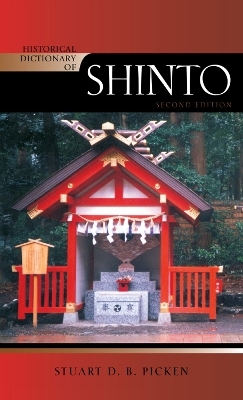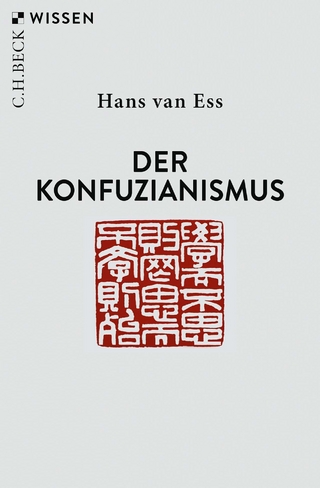
Historical Dictionary of Shinto
Seiten
2010
|
Second Edition
Scarecrow Press (Verlag)
978-0-8108-7172-4 (ISBN)
Scarecrow Press (Verlag)
978-0-8108-7172-4 (ISBN)
This expanded second edition of Historical Dictionary of Shinto relates the history of Shinto through a chronology, an introductory essay, an extensive bibliography, and over 800 cross-referenced dictionary entries on Shinto concepts, significant figures, places, activities, and periods.
One of Japan's major religions, Shinto has no doctrines and there are no sacred texts from which religious authority can be derived. It does not have an identifiable historical founder, and it has survived the vicissitudes of history through rituals and symbols rather than through continuity of doctrine. Shinto is primarily a religion of nature, centered on the cultivation of rice, the basis of a culture with which the western world is not familiar in terms of either its annual cycle or the kind of lifestyle it generates. The roots of the Shinto tradition probably precede this and reflect an awareness of the natural order. The oldest shrines came to be located in places that inspired awe and wonder in their observers, such as the great Fall of Nachi in Kumano, or in mountains that conveyed a sense of power. The expanded second edition of the Historical Dictionary of Shinto relates the history of Shinto through a chronology, an introductory essay, an extensive bibliography, and over 800 cross-referenced dictionary entries on Shinto concepts, significant figures, places, activities, and periods. Scholars and students will find the overviews and sources for further research provided by this book to be enormously helpful.
One of Japan's major religions, Shinto has no doctrines and there are no sacred texts from which religious authority can be derived. It does not have an identifiable historical founder, and it has survived the vicissitudes of history through rituals and symbols rather than through continuity of doctrine. Shinto is primarily a religion of nature, centered on the cultivation of rice, the basis of a culture with which the western world is not familiar in terms of either its annual cycle or the kind of lifestyle it generates. The roots of the Shinto tradition probably precede this and reflect an awareness of the natural order. The oldest shrines came to be located in places that inspired awe and wonder in their observers, such as the great Fall of Nachi in Kumano, or in mountains that conveyed a sense of power. The expanded second edition of the Historical Dictionary of Shinto relates the history of Shinto through a chronology, an introductory essay, an extensive bibliography, and over 800 cross-referenced dictionary entries on Shinto concepts, significant figures, places, activities, and periods. Scholars and students will find the overviews and sources for further research provided by this book to be enormously helpful.
Stuart D.B. Picken taught at the International Christian University in Tokyo, served as director of the Centre for Japanese Studies at the University of Stirling, and then concluded his career as Graduate School Dean at the Nagoya University of Commerce and Business Administration. He is currently Chair of the Japan Society of Scotland. He is a recipient of the Order of the Sacred Treasure by the Japanese government for pioneering research on Japan and for services to Japan-Scotland and Japan-U.K. relations for over three decades.
| Reihe/Serie | Historical Dictionaries of Religions, Philosophies, and Movements Series |
|---|---|
| Verlagsort | Lanham, MD |
| Sprache | englisch |
| Maße | 151 x 229 mm |
| Gewicht | 667 g |
| Themenwelt | Schulbuch / Wörterbuch ► Lexikon / Chroniken |
| Geisteswissenschaften ► Religion / Theologie ► Weitere Religionen | |
| ISBN-10 | 0-8108-7172-6 / 0810871726 |
| ISBN-13 | 978-0-8108-7172-4 / 9780810871724 |
| Zustand | Neuware |
| Haben Sie eine Frage zum Produkt? |
Mehr entdecken
aus dem Bereich
aus dem Bereich
archäologische Fakten und Fiktionen im Neuheidentum
Buch | Softcover (2023)
Verlag Anton Pustet
24,00 €


